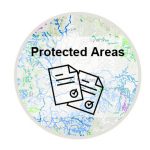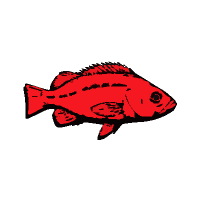Protected Areas Documentation
 Protected Areas are stream reaches where the Northwest Power and Conservation Council (Council1) has determined that hydroelectric development would have unacceptable risks of loss to fish and wildlife species of concern, their productive capacity, or their habitat. In essence, Protected Areas are places where fish and wildlife values are judged to outweigh the value of electricity those areas could generate. The Protected Areas list was completed in 1988; changes to the list were promulgated in 1989, 1990, and 1992. The Council designated 44,000 miles of river reaches as protected. Most are in the Columbia River Basin, but the designations also include river reaches outside the Basin that are within the service territory of the Bonneville Power Administration and thus within the scope of the Pacific Northwest’s regional power system. These protected river reaches have continued as a part of the Council’s Columbia River Basin Fish and Wildlife Program‘s Protected Areas and hydroelectric development and licensing strategy.
Protected Areas are stream reaches where the Northwest Power and Conservation Council (Council1) has determined that hydroelectric development would have unacceptable risks of loss to fish and wildlife species of concern, their productive capacity, or their habitat. In essence, Protected Areas are places where fish and wildlife values are judged to outweigh the value of electricity those areas could generate. The Protected Areas list was completed in 1988; changes to the list were promulgated in 1989, 1990, and 1992. The Council designated 44,000 miles of river reaches as protected. Most are in the Columbia River Basin, but the designations also include river reaches outside the Basin that are within the service territory of the Bonneville Power Administration and thus within the scope of the Pacific Northwest’s regional power system. These protected river reaches have continued as a part of the Council’s Columbia River Basin Fish and Wildlife Program‘s Protected Areas and hydroelectric development and licensing strategy. What Does It Mean to Be Designated as a Protected Area?
The Council calls on the Federal Energy Regulatory Commission (FERC) not to license a new hydroelectric development in a Protected Area. FERC has an obligation under the Northwest Power Act and the Federal Power Act to consider Protected Area status when deciding whether to grant a license for a new hydroelectric facility. Inclusion in a Protected Area does not automatically preclude FERC from issuing a license for hydroelectric development at a site, but that status is a serious consideration, and to date FERC has not licensed a new hydroelectric development in a Protected Area. The Council also calls on the Bonneville Power Administration not to acquire the power from such a project should one be licensed by FERC nor to allow access to the Pacific Northwest-Pacific Southwest Intertie (the “power grid”) in a way that would undermine the Protected Areas policy.
A Protected Area designation applies only to proposals for new hydroelectric project licenses. Thus the Protected Areas policy does not apply in the following circumstances:
- Facilities and impoundments licensed by FERC as of August 10, 1988
- Relicensing such facilities and impoundments
- Modifications to existing hydroelectric facilities or their impoundments
- Addition of hydroelectric generation to a non-hydroelectric dam or diversion if the facility existed as of the date Protected Area status was granted
- “Transition projects” for which applications or permits were sought from FERC before August 10, 1988
Protected Area designations by the Council are not the only constraint on hydroelectric development. Federal designations such as Wilderness Areas, Wild and Scenic Rivers, and other designations can constrain hydroelectric development, as can state statutes. This Protected Areas list is developed by the Council and does not necessarily include all federal and state protections. Here are some other statutes and policies under which hydroelectric development may be limited:
- Wilderness Areas administered by the U.S Bureau of Land Management, the National Park Service, the U.S. Forest Service, and the U.S. Fish and Wildlife Service (USFWS)
- Wild and Scenic Rivers
- Endangered Species Act “critical habitat” designations
How to Locate Protected Areas
Below are two methods that can be used to determine if a site is identified as a protected areas:
- Protected Areas Database
- This database contains the entire list with all updates applied. At this time it is the most reliable list, though not the easiest one to use. The list is in a Microsoft Access database that has been zipped to speed download. Depending on your computer’s settings, Windows may unzip this file for you.
- StreamNet Protected Areas Mapper
- The Protected Areas Mapper lets you find stream reaches on a map and determine if they are in a Protected Area. However, some of the stream reaches do not reflect the 1989-1992 changes. Also, approximately 1/6 of the stream reaches in the list do not show up on the mapper. (The next section explains why this is so). You can use the mapper as a good first indication, but do not depend on it for definitive Protected Area status.
How to Interpret the Reach Codes to Determine Real-World Stream Reaches
Using the Protected Areas Mapper or downloading the Protected Areas Access database will give you a reach code and a reach description. However, knowing for sure what is being referred to is sometimes tricky. By using the mapper method, you can see the stream reaches (when available) on a map, and thus know which stream reach is meant. When using one of the other two methods, there are two ways to determine the specific location referred to:
- When the reach description is not ambiguous, the simple text description of the reach is sufficient. For example, “Hood R from Odell Cr to Ditch Cr” is clear and unambiguous, as there is only one Hood River in the Pacific Northwest, and the names of the Hood River tributaries defining the reach are clear and can be found on maps.
- When streams or their tributaries are unnamed or have common names such as “Mill Creek” or “Rock Creek,” then it is necessary to use the reach code and refer to the mapping system used when producing the Protected Areas list.
At the time the Protected Areas list was created, the state-of-the-art stream mapping system was the U.S. Environmental Protection Agency’s “River Reach Number” system, which was based on 1:250,000 scale topographic maps. That system defined stream reaches only for streams appearing on the 1:250,000 scale maps; smaller streams were not included. Reaches were defined from the mouth of each stream to its first tributary shown on the 1:250,000 scale topographic map, from the first tributary shown to the second shown, etc., until reaching the headwaters. A numeric code was created to represent each reach. Thus a single stream may be represented by a single reach code or by multiple reach codes. Unfortunately, many streams in the Protected Areas list are too small to appear on the 1:250,000 scale topographic maps. For this reason, the original EPA River Reach File maps were modified by drawing in streams by hand and creating new reach codes, by splitting original reaches, and by modifying or deleting reaches that were found to be in error. These modified River Reach File Hydrologic Segment Plots define the reach codes used for nearly all the Protected Areas. To determine with certainty the stream reach a code is meant to represent, you must refer to these modified River Reach File Hydrologic Segment Plots.
There are 19 exceptions from the Cowlitz River drainage and one exception from the Skykomish River drainage that do not use the modified River Reach File codes to indicate reach location. The reach codes listed for these exceptions begin with “LLID.” The 13-digit number following LLID is the stream code currently used by StreamNet to represent a stream. (These codes refer to entire streams, not just to stream reaches as the EPA system does.) These 20 streams are currently listed only in the downloadable database and cannot be found via the query system or the mapper.
Understanding the location coding used for Protected Areas is not simple and has not been fully explained here. If you need help, please contact us via email at project@streamnet.org or call us at 503-595-3100.
Studies Informing the Designation of Protected Areas
Beginning in 1983, the Council directed extensive studies of existing habitat and analyzed alternative means of protection. In 1988, the Council concluded that:
- The studies had identified fish and wildlife resources of critical importance to the region
- Mitigation techniques cannot assure that all adverse impacts of hydroelectric development on these fish and wildlife populations will be mitigated
- Even small hydroelectric projects may have unacceptable individual and cumulative impacts on these resources
- Protecting these resources and habitats from hydroelectric development is consistent with an adequate, efficient, economical, and reliable power supply
The Council, relying on these studies, designated certain river reaches in the basin as Protected Areas, where the Council believes hydroelectric development would have unacceptable risks of loss to fish and wildlife species of concern, their productive capacity, or their habitat. River reaches to be protected are those reaches or portions of reaches listed on the “Protected Areas List” adopted by the Council on August 10, 1988, and subsequently. For each river reach listed on the Protected Areas List, the fish and wildlife to be protected are those on the list.
Protected Areas Documentation
We have gathered all the documentation available to us and created PDF files for download. These documents can help you find definitive legal information. Also, you can visit the Council’s Protected Areas webpage for further information. The entire list of documents specific to the Protected Areas List is organized as shown below.1 A note on the Northwest Power and Conservation Council
At the time the Protected Areas were adopted, the Northwest Power and Conservation Council was named the Pacific Northwest Electric Power and Conservation Planning Council. It was renamed the Northwest Power and Conservation Council in July 2003. Use the old name when searching for Federal Register or other documents before July 2003.

